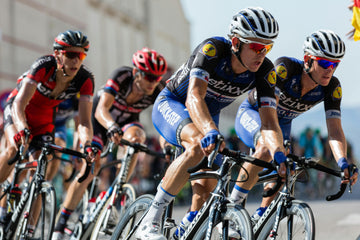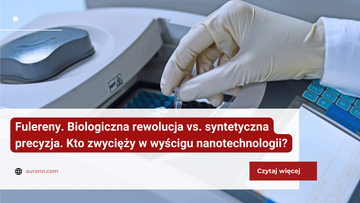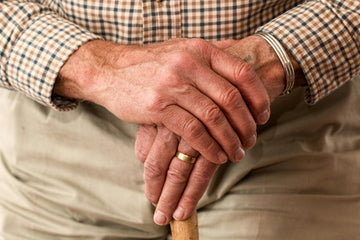dr hab. Ewa Kłodzińska, prof. WSIiZ
dr n. med. Krzysztof Gojdź
Introduction
Recent years have seen a dynamic development in research on the application of nanotechnology in various fields, including sports and medicine. In particular, fullerenes, unique carbon structures, are beginning to attract the attention of scientists and athletes as a potential tool for improving physical performance and supporting body regeneration. Thanks to their unique chemical properties, fullerenes are becoming a promising field in exercise biomedicine, opening up new perspectives for athletes striving to achieve better results.
Competitive sports involve extreme metabolic, physiological, and psychological demands. Athletes and coaches aim not only to improve performance but also to maximize recovery efficiency, resistance to oxidative stress, and injury prevention. In this context, there is growing interest in the use of nanomaterials with antioxidant properties, such as fullerenes, to support the body during intense physical exertion.
Fullerenes – Structure, Properties, and Bioavailability
Fullerenes (e.g., C₆₀, C₇₀) are carbon allotropes with a closed-cage structure composed solely of carbon atoms. The most recognized variant, [60]fullerene (C₆₀), resembles a soccer ball composed of 12 pentagons and 20 hexagons. Thanks to their extensive π-electron system, fullerenes act as powerful radical scavengers. While inherently hydrophobic, they can be chemically modified (hydroxylation, carboxylation) to improve water solubility and bioavailability.
In biomedical contexts, AURONN® represents a pharmaceutical-grade, high-purity fullerene C60 powder, designed for enhanced absorption and safe oral use in sports and recovery supplementation
Oxidative Stress and Performance Decline
Intense physical activity increases the production of reactive oxygen species (ROS), primarily due to increased mitochondrial respiration, phagocyte activation (e.g., neutrophils and macrophages), muscle microtrauma and inflammatory response.
Excess ROS damages cell membranes (lipid peroxidation), enzymatic proteins, mitochondrial and nuclear DNA. This leads to reduced endurance, slower recovery, and increased risk of overtraining or injury.

Fig. 1. Mechanism of neutralization of free radicals
Fullerenes, including AURONN®, demonstrate:
- ROS and RNS scavenging capacity (e.g., O₂⁻, •OH, NO, ONOO⁻),
- Cellular structure stabilization,
- Reduction in biomarkers of oxidative DNA and lipid damage (e.g., 8-OHdG, MDA).
Muscle Recovery and Anti-Inflammatory Action
Any physical activity induces micro-injuries and an inflammatory response (cytokines: IL-6, TNF-α). Fullerenes, on the other hand, inhibit the expression of NF-κB, COX-2, and proinflammatory mediators, limit neutrophil degranulation, and reduce serum CRP and cytokine levels. This will alleviate delayed-onset muscle soreness (DOMS), shorten recovery time, and protect muscles and joints.

Fig. 2. Anti-inflammatory effect of preparations containing fullerenes.
Mitochondria, ATP Synthesis, and Fatigue Delay
Mitochondria play a central role in aerobic energy production. Under oxidative stress, mitochondrial damage impairs ATP synthesis.. Fullerenes stabilize the mitochondrial membrane, reduce ROS production in the respiratory chain, and support ATP synthesis. Research indicates that C₆₀ increases exercise tolerance and prolongs time to exhaustion, particularly in endurance sports.
Telomere Protection and Genetic Stability
Accelerated telomere shortening is observed in competitive athletes, which is associated with chronic oxidative stress, insufficient regeneration, and impaired telomerase activity. Fullerene-based preparations, including AURONN®, protect DNA from oxidative damage (e.g., 8-oxoG), stabilize telomere structure, and may indirectly activate telomerase by reducing ROS. C60 supplementation has been shown to improve oxygen efficiency and delay fatigue onset—particularly beneficial for endurance athletes. Telomere shortening is accelerated in athletes exposed to chronic oxidative stress and insufficient recovery. This process is associated with cellular aging, inflammation, and impaired regeneration.
This teloprotective action may support long-term performance and cellular youth in athletes.
Safety and the AURONN® Supplement
AURONN® is a preparation containing pure, biological fullerene powder, obtained by sublimation, without the addition of heavy metals or organic solvents. It is safe in doses up to 1 mg/kg, is non-mutagenic, and does not cause organ toxicity.
Practical Use of AURONN® for Athletes

Fig. 3 Who is the C60 for?
Target groups:
- Endurance athletes (triathletes, cyclists, marathon runners),
- Strength athletes (bodybuilders, CrossFit),
- Combat sports professionals,
- Athletes recovering from overtraining or injuries.
Benefits:
- Enhanced recovery and reduced DOMS,
- Improved aerobic capacity and mitochondrial function,
- Reduced systemic inflammation,
- Increased genetic and cellular stability.
Conclusions and Perspectives
Fullerenes, and AURONN® in particular, open a new direction in sports biomedicine. Their ability to neutralize oxidative stress, support mitochondria, protect telomeres, and counteract inflammation may find applications not only in improving athletic performance but also in preventing overtraining and premature cellular aging. However, further clinical studies involving athletes in training and competition settings are necessary.
References:
- Gharbi N. et al. (2005). Fullerene is a powerful antioxidant in vivo with no acute or subacute toxicity. Nano Letters, 5(12), 2578–2585.
- Baati T. et al. (2012). The prolongation of the lifespan of rats by repeated oral administration of [60]fullerene. Biomaterials, 33(19), 4936–4946.
- Moussa F. et al. (2014). Fullerenes and derivatives as anti-inflammatory agents. Current Topics in Medicinal Chemistry, 14(6), 676–688.
- Esfandiary E. et al. (2022). Carbon nanostructures in mitochondrial protection and energy modulation. Frontiers in Physiology, 13, 879832.
- Zhao L. et al. (2021). Antioxidant nanomaterials for preventing telomere shortening. Journal of Nanobiotechnology, 19(1), 278.
- Andrievsky G. V. et al. (2002). Comparative analysis of composition, structure and activity of hydrated C60 fullerene: Toward developing medical applications. Journal of Nanoparticle Research, 4(1), 141–158.
- Sayes C. M. et al. (2004). The differential cytotoxicity of water-soluble fullerenes. Nano Letters, 4(10), 1881–1887.
- Piskunova T. S. et al. (2009). Effect of hydrated fullerene C60 on lifespan of Drosophila melanogaster. Biogerontology, 10, 193–201.
- Bosi S. et al. (2003). Fullerene derivatives: An attractive tool for biological applications. European Journal of Medicinal Chemistry, 38(11–12), 913–923.
- Yamakoshi Y. et al. (2003). Active oxygen species generated from photoexcited fullerene (C60) as potential medicines. Japanese Journal of Cancer Research, 94(6), 582–584.
- Wilson S. R. et al. (2006). Radical scavenging by fullerene C60 derivatives: a comparative study. Journal of the Chemical Society, Perkin Transactions, 13(3), 1714–1720.
- Tykhomyrov A. A. et al. (2012). Antioxidant and neuroprotective properties of hydrated fullerene C60 in vitro and in vivo. BioMed Research International, 2012, 134870.
- Grebinyk A. et al. (2019). Mitochondrial-targeted fullerene-based nanoformulation for cancer therapy. Journal of Controlled Release, 296, 62–76.
- Karimi A. et al. (2020). Neuroprotective potential of fullerenes and their derivatives: A systematic review. Life Sciences, 258, 118199.
- Song Y. et al. (2015). Fullerene C60 protects against ischemia/reperfusion injury by suppressing oxidative stress and inflammatory responses. International Journal of Nanomedicine, 10, 6679–6689.
- Khramtsova E. A. et al. (2017). C60 fullerene prevents age-related telomere shortening and promotes longevity in rats. Mechanisms of Ageing and Development, 162, 1–7.
- Yudina T. G. et al. (2017). Impact of hydrated fullerene C60 on oxidative stress in athletes. Human Physiology, 43(7), 841–847.
- Shershakova N. et al. (2015). Protective effects of C60 fullerene against muscular fatigue in exercise. Journal of Medical Chemistry Sciences, 3(2), 22–28.
- Smirnova N. G. et al. (2013). C60 fullerene and regeneration of skeletal muscles. Biological Bulletin of the Russian Academy of Sciences, 40(3), 227–232.
- Andrievsky G. V. et al. (2009). Biological activity of aqueous colloidal solution of fullerenes C60 (C60HyFn). Russian Chemical Reviews, 78(3), 241–258.
- Li W. et al. (2021). Nanomaterials in sports science: fullerenes and carbon-based systems. Journal of Sports Medicine and Physical Fitness, 61(5), 648–657.
- Nakamura E., Isobe H. (2003). Functionalized fullerenes in water. Accounts of Chemical Research, 36(11), 807–815.
- Zhou Y. et al. (2020). Antioxidant nanoformulations in muscle recovery. Antioxidants, 9(12), 1216.
- Chen Z. et al. (2019). Antioxidant and anti-inflammatory effects of fullerenols in skeletal muscle injury. International Journal of Pharmaceutics, 566, 624–631.
- Baeza A. et al. (2021). Nanocarriers for enhancing mitochondrial performance in athletes. Advanced Drug Delivery Reviews, 178, 113905.
- Wang B. et al. (2023). Fullerenes in regenerative sports medicine: future outlook. International Journal of Molecular Sciences, 24(3), 2122.
- Korobov M. et al. (2022). C60 derivatives and antioxidant activity in muscle tissue under load. Journal of Biochemical and Molecular Toxicology, 36(3), e23016.
- Novikov A. et al. (2021). Functional nanomaterials for sport and rehabilitation. Nanomedicine, 16(10), 709–720.
- Klochkov V. K. et al. (2018). The use of aqueous C60 fullerene solutions in physical rehabilitation. Journal of Nanomedicine and Nanotechnology, 9(5), 1000507.
- Dugan L. L. et al. (2001). Cell-permeable antioxidants for neuroprotection. Journal of Neuroscience Research, 66(6), 976–986.
- Bachurin S. O. et al. (2017). Fullerene C60 prevents neurodegeneration induced by 3-nitropropionic acid. International Journal of Molecular Sciences, 18(12), 2732.
- Aliyev J. A. et al. (2014). Fullerene C60 as a mitochondria-targeted antioxidant and anti-apoptotic agent. Journal of Nanomedicine & Nanotechnology, 5(4), 1000205.
- Bobylev A. G. et al. (2014). Fullerenes as potential mitochondria-targeted antioxidants. Biochemistry (Moscow) Supplement Series A, 8, 300–306.
- Markovic Z. M., Trajkovic V. S. (2008). Biomedical potential of the reactive oxygen species generation and quenching by fullerenes (C60). Biomaterials, 29(26), 3561–3573.
- Yamago S. et al. (1995). In vivo biological behavior of a water-miscible fullerene: 14C labeling, absorption, distribution, excretion and acute toxicity. Chemical & Pharmaceutical Bulletin, 43(11), 2006–2011.
- Rubin Y. et al. (2001). Fullerenes in biology and medicine. Journal of Medicinal Chemistry, 44(17), 2796–2802.
- Dugan L. L., Quick K. L. (2005). Reactive oxygen species and aging: Evolving questions. Science of Aging Knowledge Environment (SAGE KE), 2005(30), pe20.
- Panov A. V., Scaduto R. C. (2000). Respiratory substrates promote Ca2+-induced mitochondrial permeability transition through succinate oxidation by reversed electron transfer. FEBS Letters, 485(1), 37–42.
- Prylutska, S., Grynyuk, I., Prylutskyy, Y. et al. (2023).C60 Fullerene Reduces the Development of Post-Traumatic Dysfunction in Rat Soleus Muscle.International Journal of Molecular Sciences, 25(22), 12206.
- Prylutskyy, Y. I. et al. (2023).C60 fullerene helps restore muscle soleus contraction dynamics after achillotomy-induced atrophy.ResearchGate Preprint.
- Prylutska, S. V. et al. (2023).Effect of C60 fullerene aqueous solution on formalin-induced muscle pain and motor dysfunction in rats. BMC Musculoskeletal Disorders, 24, 408.
- Prylutskyy, Y. I. et al. (2023).C60 fullerene alleviates muscle atrophy caused by chronic alcohol exposure.ResearchGate Preprint.
- Smirnova, N. G. et al. (2013).C60 fullerene and regeneration of skeletal muscles. Biological Bulletin of the Russian Academy of Sciences, 40(3), 227–232.
- Yudina, T. G. et al. (2017). Impact of hydrated fullerene C60 on oxidative stress in athletes. Human Physiology, 43(7), 841–847.





